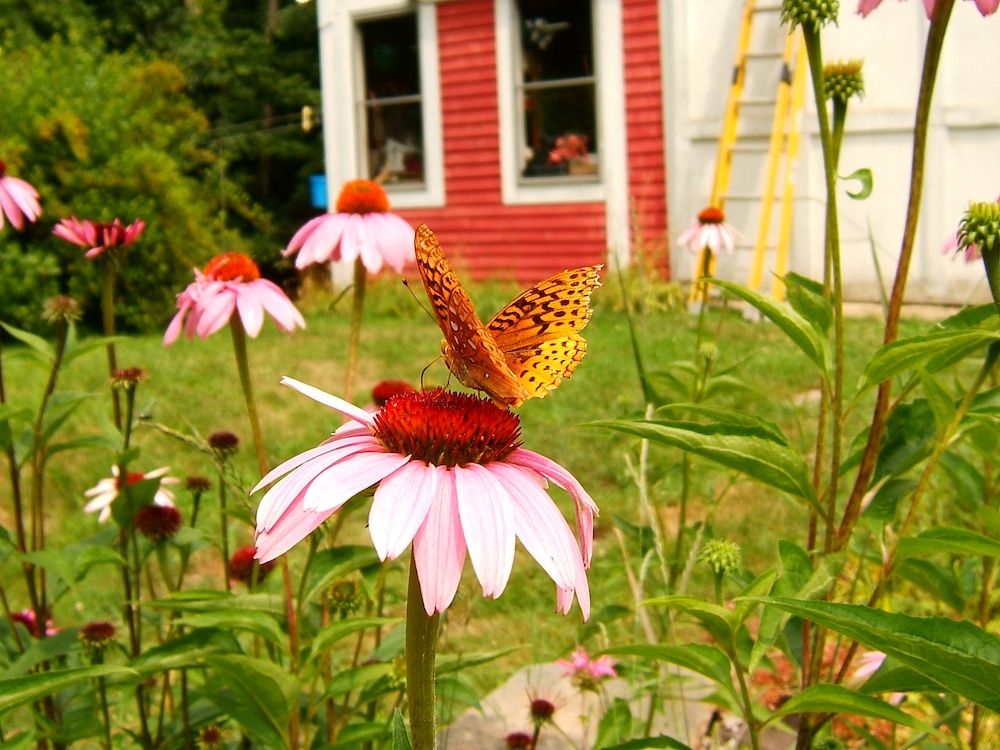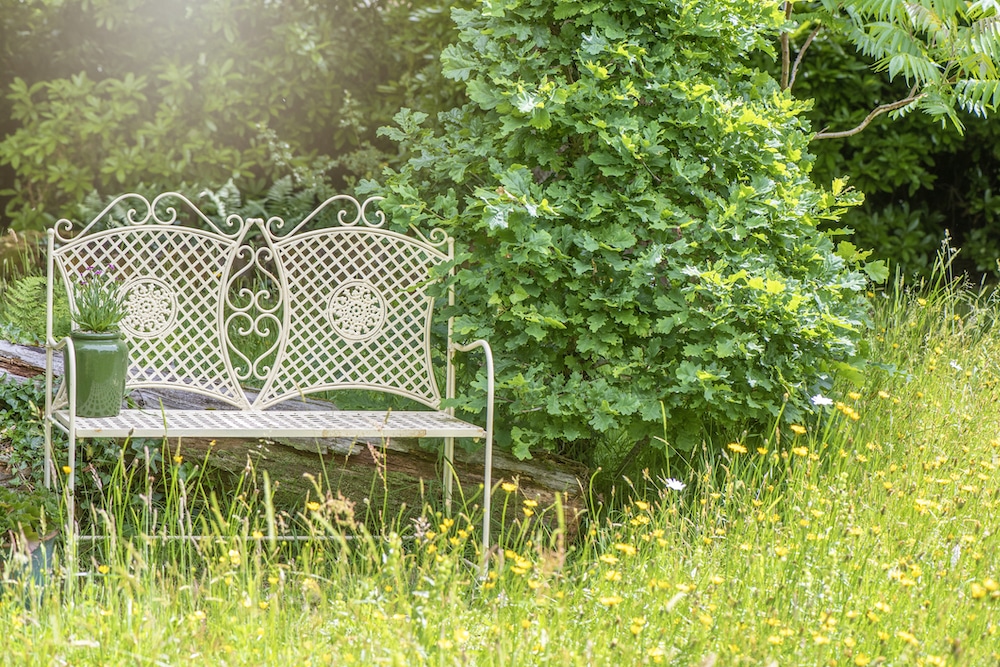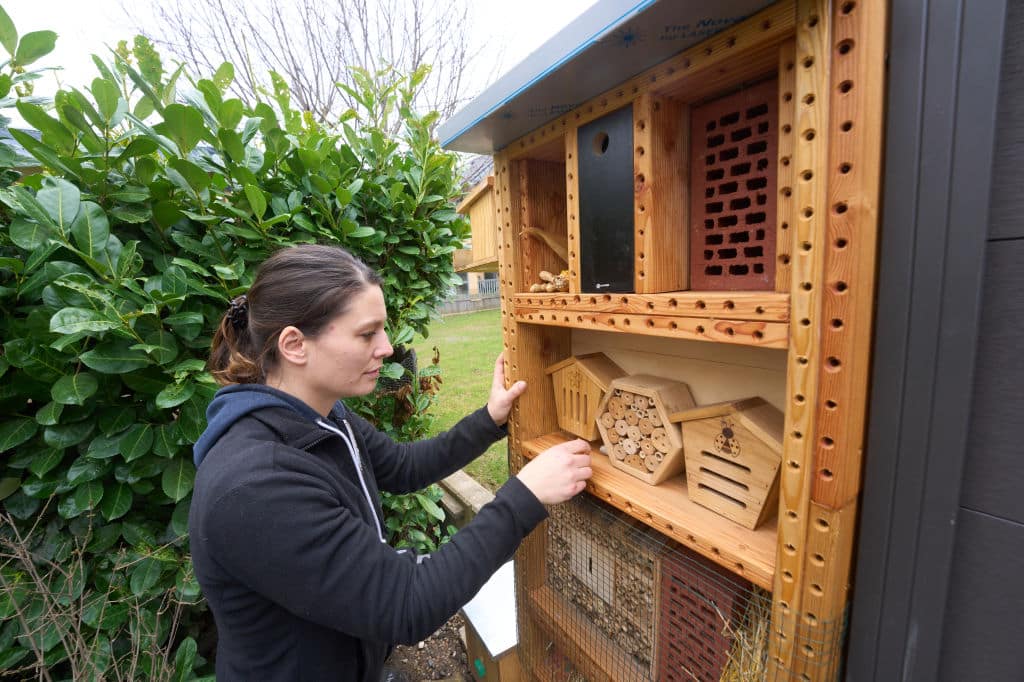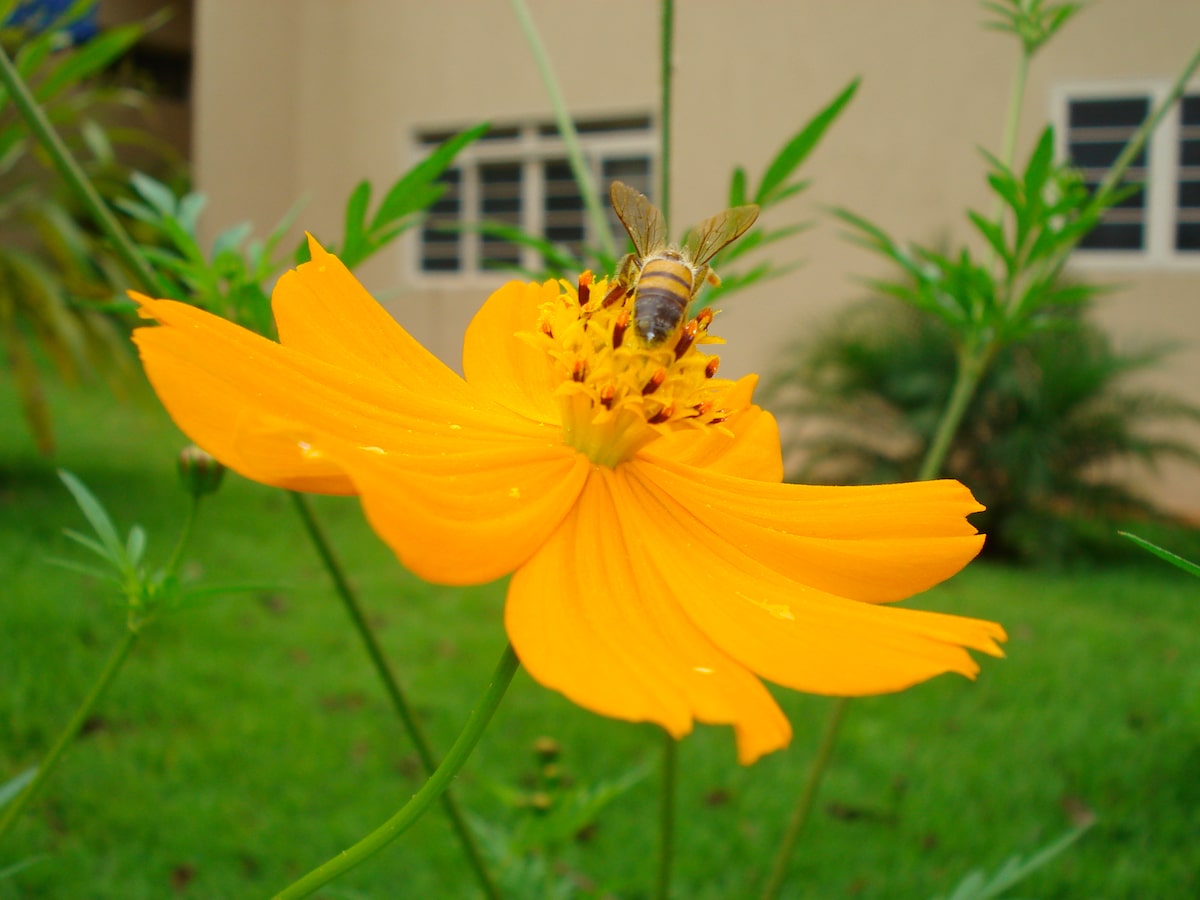Products You May Like
Pollinators are crucial for growing the food we eat and supporting the diverse plant life that sustains our ecosystems. When feeding on pollen or nectar for energy, pollinators carry pollen from the stamen of the flower to the stigma, which fertilizes the plant so it can produce fruit and seeds. While honeybees and bumblebees might come immediately to mind as pollinators, they actually aren’t native to the U.S. There are 20,000 different species of bees in the world, and 4,000 in the U.S. and Canada alone, many of which look different from the bees we’re familiar with. Plenty of other species work as pollinators, too, like ants, beetles, butterflies and wasps, as well as bats and birds. About 2,000 bird species feed on flowers — primarily hummingbirds in the U.S.
About 80% of all plants on earth depend on pollinators to survive, as well as 75% of leading food crops. Without pollinators, we would lose so many plant species that depend upon them, and thus lose their service as carbon sequesterers, removing carbon dioxide from the atmosphere and thereby combating climate change. Yet, due to pesticide use, habitat loss and fragmentation, and the impacts of climate change, pollinator populations are dwindling. In 1947, there were around 6 million managed bee colonies — a number that plummeted to around 2.71 million by 2020.
More From EcoWatch
In the face of colony collapse and other threats to pollinators, these species need more hospitable environments to reproduce and thrive — and your backyard can be the perfect place.

Ditch Your Lawn
It’s time to break up with your lawn.
Turf grass covers 2% of the continental U.S., and it’s the single largest irrigated crop in the country. Basically, we’re mono-cropping our yards with non-native grass species and failing to support the diverse plant and animal life needed in a healthy ecosystem, creating a food desert for pollinators. Growing multiple plant species in your yard provides multiple food sources for animal species, boosting the diversity of your yard and contributing to the larger food web of the region. Plants will also be less susceptible to disease in the midst of greater diversity. Instead of throwing down grass seed, try cultivating a few new plants in the yard (more on growing native plants later).
Or, let the weeds reign! Clover, dandelion and other lawn weeds are some of the most important food sources for bees in urban areas. Try native ornamental grasses instead of the typical Kentucky Bluegrass, or try other groundcover plants like barberry cotoneaster, clover, Corsican mint and creeping jenny, or flowering perennial groundcover species like horned violets, liriope and sweet woodruff.
Mow Less
If you do need to maintain a lawn, cut back on mowing. Rather than cutting the grass once a week, try for every three weeks, which is enough time for pollinators to enjoy flowering plants before they’re gone. Not to mention, you’ll emit fewer fossil fuels without turning on the gas-powered lawn mower as frequently.

Plant Native Species
Perhaps the most important thing you can do to attract pollinators to your yard is planting native flowering plants! Instead of covering the expanse of your yard with non-native grass, transform a section — or the whole thing — into a native plant garden. Even if you don’t have a yard, a few window boxes or containers on a porch or balcony is very beneficial to pollinators.
Regional pollinators coevolved with native plants over time, forming mutually beneficial relationships that can play out in your own yard; both pollinator and plant will be more successful by interacting with one another. Because native species vary widely by region, there’s no one-size-fits-all recommendation for which plants to grow. Look for local gardening resources before choosing seeds, or check out the National Plant Society and the Ecoregional Planting Guides from the Pollinator Partnership to search for native plants in your area.
Spring and summer aren’t the only times for growing flowers — be sure to look for pollinator-friendly flowers that grow in the late summer and fall, too.
Provide Nesting Sites
Along with providing pollen and nectar for pollinators to feed on, provide them with a safe place to live, too. Both bees and hummingbirds create nests, maybe even in your backyard. Hummingbirds use plant matter like moss and lichen to build nests in trees or bushes, so take care not to interrupt their existing nesting sites when trimming shrubs or trees.
Contrary to popular representations of bees, not all live in hives. In fact, most bee species are solitary. Ground nesting bees create burrows in the ground to live and lay their eggs. Provide them a space to nest by leaving a small patch of bare dirt at the edge of your yard, out of reach of the sprinklers. Cavity nesters, on the other hand, use piles of sticks, logs, branches and twigs for nests. If it’s not a hazard, leave some debris piles for them to utilize, especially at the end of the season when you aren’t using all garden space.

Alternatively, buy (or make) an insect hotel, which mimics natural nesting areas for a variety of beneficial insects, like wood-boring beetles and solitary bees. Take a wooden container (preferably one that’s rot-resistant, like cedar) and fill it with natural materials like bamboo pieces, twigs and sticks, pinecones, wood shavings and other materials. The crevices between them are good nesting sites for bugs.
Avoid Pesticides and Befriend the Bugs
To invite pollinators into your yard, lay down the pesticides.
Some pesticides — like neonicotinoids — are “systemic.” This means they make plants toxic to insects, including bees. It can impair their memory, interfere with reproduction and make them more at risk for viruses, which are widespread and potentially deadly. Scientists have found evidence of pesticides and herbicides in beehives and honey, meaning that bees pick up these substances when they’re pollinating and bring them back to their hive.
Instead of spraying your crops, try an organic method instead. Check out the Farmers Almanac guide to naturally deterring garden pests. Bringing in more bugs can actually help, too. Add more beneficial insects to your garden — like ladybugs and praying mantises — that feed on the problematic ones. Ladybugs can eat thousands of aphids, and the ground beetles will take care of caterpillars, slugs, nematodes and weevils. The more species diversity, the less problematic those bag bugs will be.
If you do use pesticides, read the EPA’s guidance on how to do so responsibly and with minimal impact.
Provide a Water Source
Like us, pollinators need water. A small water source in your yard helps them hydrate, clean themselves and moderate their body temperature. Butterflies and bees like a puddle area, and all will benefit from a bird bath or small water feature. Hummingbirds will even drink from a hanging water bottle with a slow drip. For the bees, put out a shallow dish of water filled with marbles or stones so they can reach the liquid without drowning.
